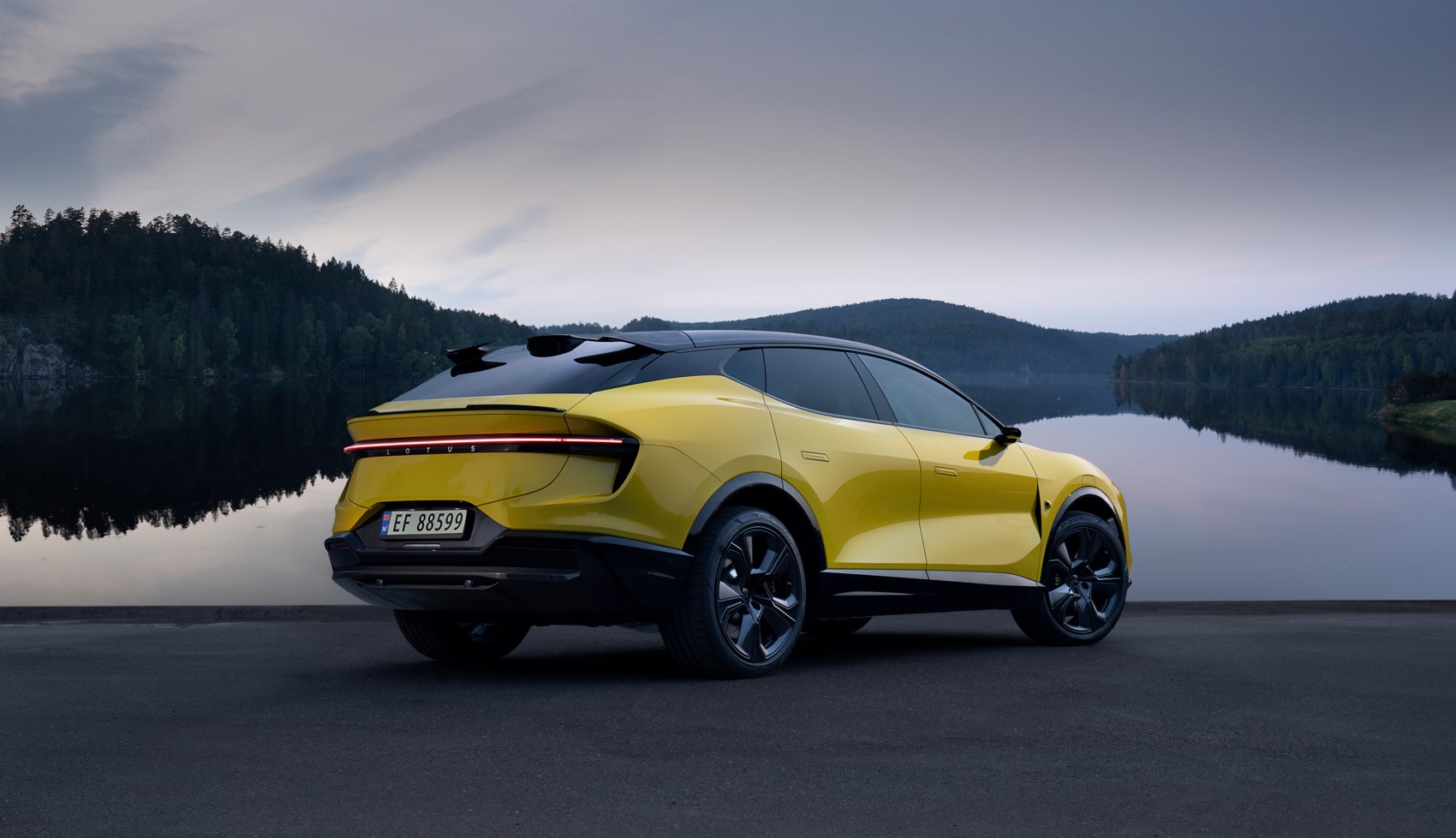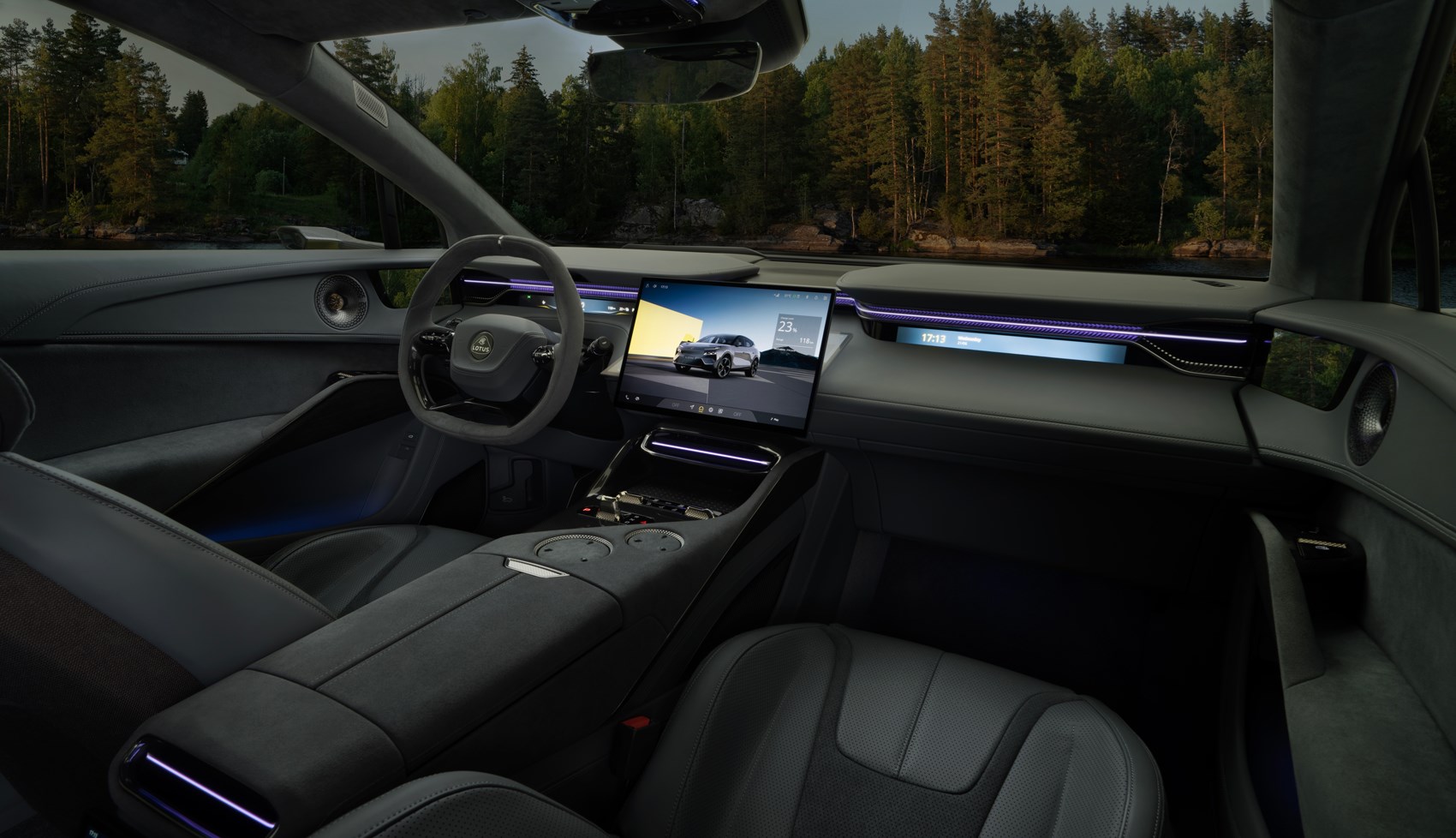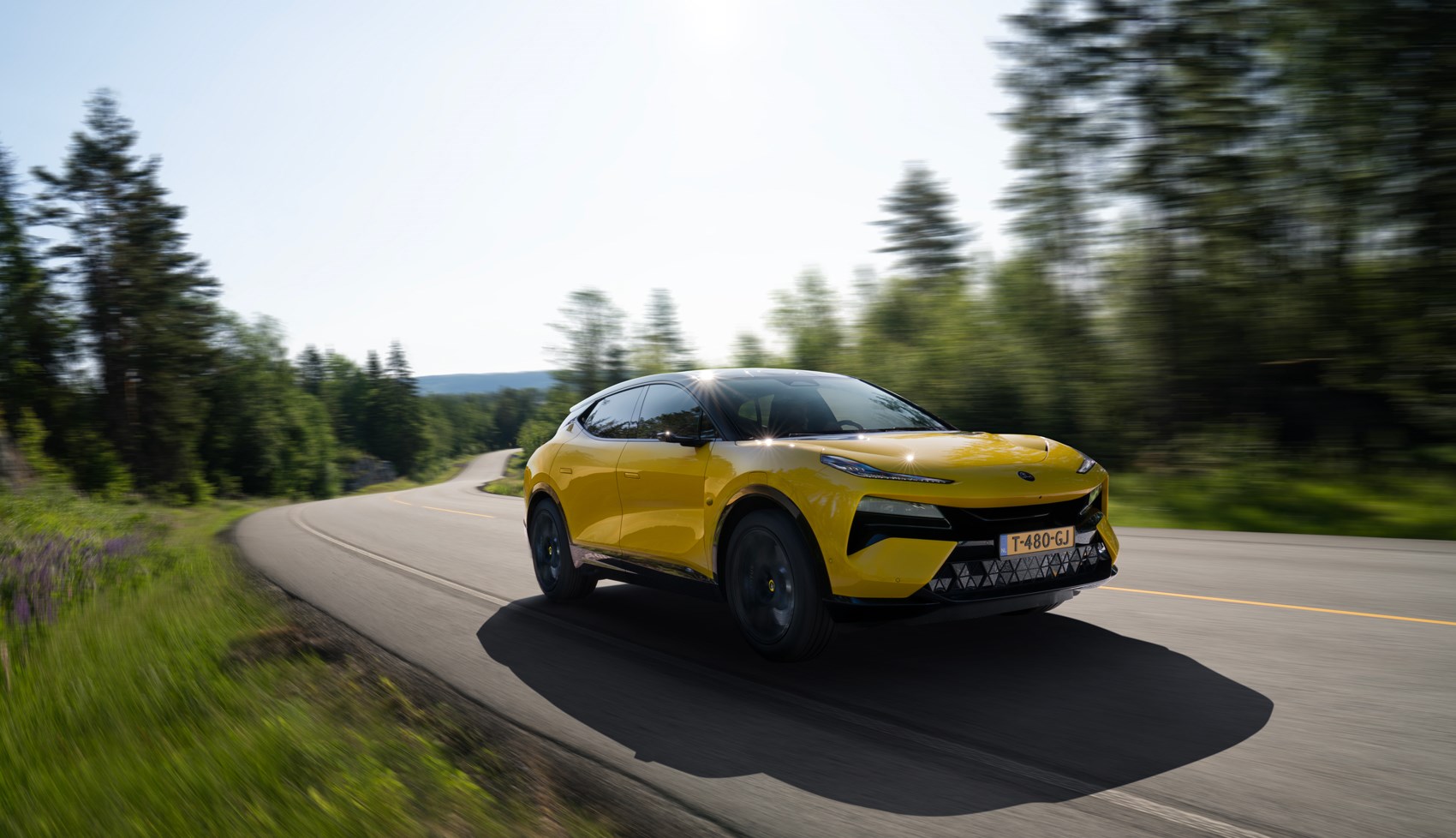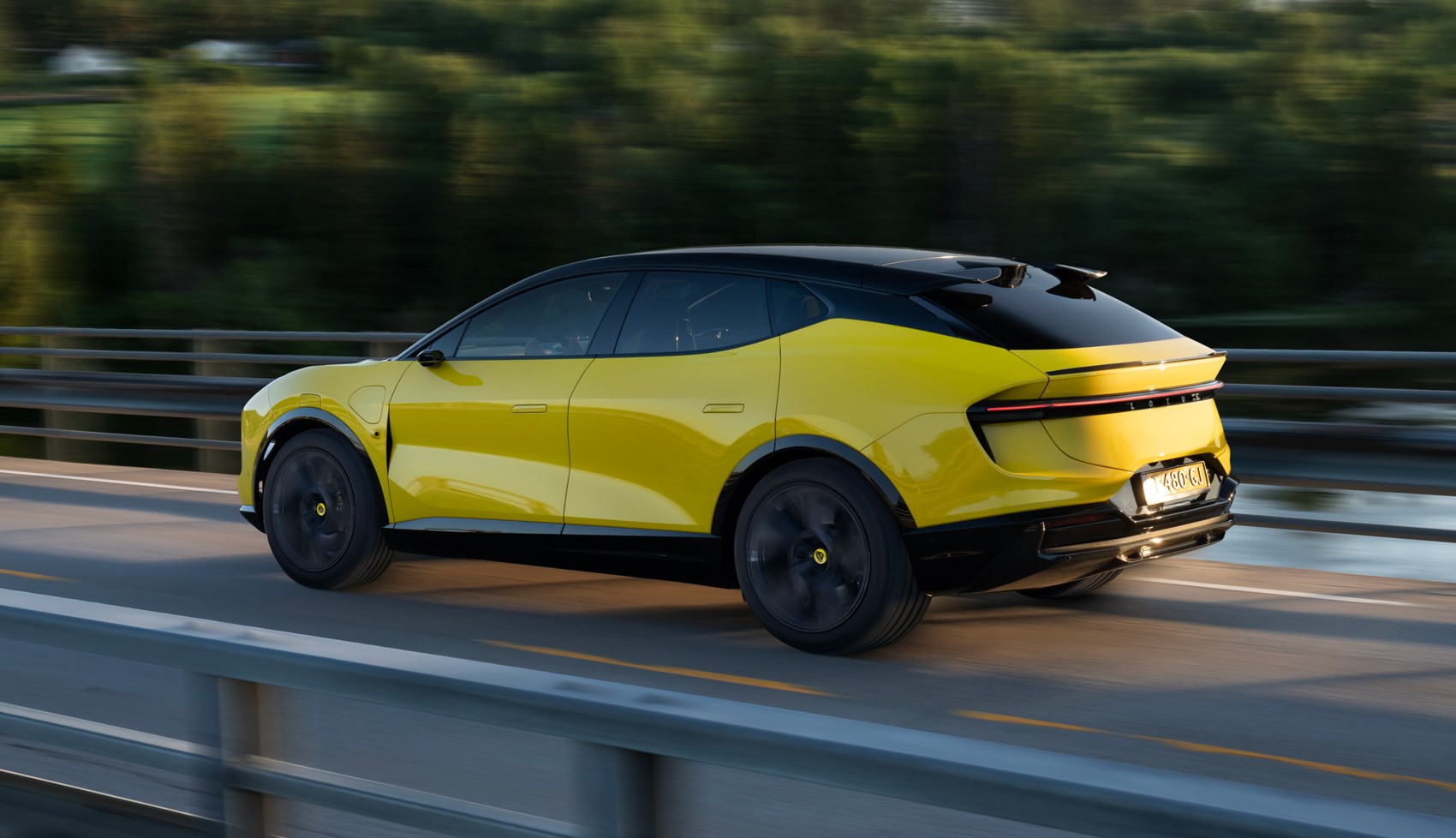► Lotus’ new Eletre SUV driven
► Electric, big and rather heavy
► Can it still have some of that Lotus magic?
We’re all thinking it. The new Lotus Eletre – 2.5 tonnes of D-segment electric SUV that happens to be as long and even wider than an S-Class – is about as anti-Lotus as you can get.
‘What did you expect?’ asks Max Szwaj, the senior engineer, formerly with Aston Martin, who runs the Lotus Tech Innovation Centre in Raunheim. ‘We cannot base the future of this marque on 1500 sports car sales per year. Reinventing Lotus means broadening the appeal, expanding the portfolio, setting new standards in terms of vehicle dynamics and user experience. The main agent of change is of course the switch to electrification.’
That’s us told. Time to drive.
Hold on – I need some Eletre spec details first…
There are three Eletres to choose from. The base model (£89,500) and the S (£104,500) share the single-speed, dual-motor drivetrain rated at 603bhp and 524lb ft. They can sprint 0-62mph in 4.5sec and max out at 160mph. The 165mph R version (£120,000) puts 905bhp and 727lb ft through a two-speed transmission. It can do the acceleration run in a flaming 2.95sec.

Common to all variants is the 800-volt system, a potent 112kWh lithium-ion battery and the ability to boost the state of charge from 10 to 80 per cent in 20 minutes flat when connected to a 350kW force feeder. While the two lesser editions boast a maximum range of 373 miles when driven with iron self-restraint, the R led on an equally tight leash needs fresh energy every 304 miles. We’re driving the Eletre S here.
Inside, there’s not the faintest trace of old-school Lotus, and that’s largely a good thing. Fit-and-finish, once a truly alienating issue, deserves a firm thumbs-up, the materials are positively premium, the equipment is reassuringly complete, rear legroom in particular benefits from the engineless packaging, and the boot of the standard five-seater holds a cavernous 688 litres, not counting the useful 46-litre front cubicle. Unless you insist on supercar performance, the base model is clearly the best buy of the bunch.

The S adds mainly nice-to-have but by no means mandatory luxury items like soft-close doors, 2160-watt 23-speaker KEF audio system, active rear spoiler and fancier wheels for a £15k premium.
On top of this, the R features active anti-roll bars and rear-wheel steering together with shaved performance tyres and the lairier Track mode, plus of course 302 additional horses and 210lb ft of extra torque. Air springs with continuous damping control, matrix LED headlights and head-up display are standard on all versions.
As is the infotainment system dubbed Hyper OS. In addition to familiar interfaces like the multi-functional steering wheel, the head-up display and the large centre touchscreen, there’s an iPad-type control panel for the rear passengers. Up front, the driver instrument monitor is mirrored on the passenger side, similar to the system first introduced in the Ferrari FF.

Some of the interface takes time to get used to. On our test car, voice control is flawed, there is no haptic or acoustic confirmation of touchscreen inputs, the small graphics and the even smaller listings could do with magnifying proximity sensors, and the toggles on the steering wheel are too flimsy for fat fingers, but there’s nothing that couldn’t be fixed over the air or with the next hardware update. On the credit side, we’re taken aback by the awesome KEF and Dolby Atmos sound system, the crystal clear OLED graphics and cute details like the variable-tint glass roof or the charming CO2-neutral material mix.
So, how does the Eletre drive?
Even more so than the Mercedes EQE 53 AMG and the BMW iX M60, the Eletre is a straight-line riot and a g-force-hungry apex wrestler – a powerful and rapid car. But also a car that struggles to hide its weight. Even though the centre of gravity can be lowered in two steps by up to 25mm (or raised for off-roading), reeling in the mighty mass and push-carving it through mid-speed corners without overdriving the bespoke Pirellis makes you feel like the skipper of a yacht sailing hard on the wind.

It was never going to feel like an Elise. But does it at least feel like the Lotus among high-end, high-performance electric crossovers? Yes and no. No because even in Track mode and on wet turf this is a perfectly safe, controllable and confidence-inspiring piece of kit. No undue snap oversteer, no sudden break of front-end grip in contracting corners, no borderline torque-vectoring experiments. Yes because the steering stays switched on no matter what, winds on and unwinds lock with intuitive clarity, never feels detached or artificial. The brakes harbour the stopping power of a guillotine, fuse instant feedback and progressive action, blend electric and mechanical deceleration with aplomb. The Eletre is a fuss-free precision tool, and highly impressive.
In the context of electric SUVs, the Eletre is also remarkable for sparing us questionable attributes like hyperactive when-to-charge-and-where advisors, or assistance systems interfering seemingly at random. While the left paddle lets you choose the preferred regen level, the right paddle scrolls through the drive modes labelled Tour, Range, Sport, Off-Road, Individual and Track (R only).

After some experimentation, we settle on Individual and lock everything in Sport bar the suspension, which is best left in Tour for that extra layer of compliance. As far as ESP goes, it’s either on or off – there is no in-between option. It’s probably not worth an extra 30 grand, but rich hooligans may want to bear in mind that only the £120k R is fitted with the two-speed transmission which delivers a big, fat bonus punch of rear-centric full-throttle torque overboost when shifting into second at about 85mph.
After storming down a runway with launch control assist in not quite a straight line yields a momentary top speed of 155mph in the blink of an eye, the truly ballistic 50-75mph acceleration in just under two seconds is even more mind boggling. The open diff and the brake-actuated torque-split system further sharpen the handling balance.
Lotus Eletre: verdict
The Eletre’s mission, from a business point of view, is to help boost sales from under 800 units last year to a targeted 175,000 cars by 2030. The Type 135 sports car may contribute between 5000 and 10,000 pieces to the grand total, but it may need at least one more body style and a cost-cutting sister model to stay airborne in a period of time when two-seaters are no longer selling like hot cakes. There’s no escaping market trends, so it’s the crossovers that will have to do the bulk of the heavy lifting, sales wise.
Perhaps the well-being of Lotus does, after all, not depend on its ability to reimagine traditional brand values. Instead, it may be more important to carve out a lead in the predominantly digital areas which define the future.
If that’s the winning formula, then the Eletre is right on track.